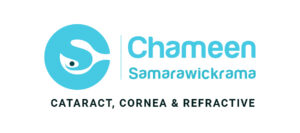Understanding the Growing Concern
Screens surround us, in classrooms, living rooms, and with tablets and smartphones almost everywhere. Although digital technology is making kids smarter and more connected, its overuse is causing growing concern for parents and children’s eye specialists in Sydney and worldwide. Eye strain in children, bad posture, sleep problems, and increased instances of myopia (short-sightedness) are now directly associated with excessive screen use.
At most clinics, families often ask: “How much screen time is safe for my child?” and “What habits can protect my child’s vision in the digital age?” To answer these, we’ve compiled the latest insights from leading children’s eye specialists in Sydney, along with practical advice for parents.
Why Screens Affect Children Differently
Children’s vision is still developing. That is, longer exposure to screens can have more impact than in adults:
- Difficulty in focusing – Children’s eyes have to work harder to shift focus between far and near. Viewing something in proximity for a prolonged time can tire eye muscles.
- Dryness and blink trouble – Concentration on screens decreases the rate of blinking, causing irritation.
- Myopia progression – Research indicates that each extra hour of screen use elevates the risk of short-sightedness considerably.
- Postural strain – Holding devices too close causes neck, shoulder, and back pain.
A Sydney-based children’s eye specialist describes: “The biggest challenge is not the technology itself, but how long and how often children are using it without breaks.”
Recognizing the Signs of Eye Strain in Children
Most parents miss minor signs until they turn into issues. Be on the lookout for these telltale signs:
- Excessive eye rubbing or blinking
- Report of frequent headaches, particularly after device usage
- Difficulty focusing on far-away objects (early sign of myopia)
- Holding devices close to the face
- Avoidance of reading or visual activities
If your child presents with these patterns, it is essential to see a children’s eye specialist for a proper evaluation.
Screen Time Guidelines for Children (By Age Group)
World health organizations and the Australian 24-Hour Movement Guidelines offer the following screen time recommendations for children:
- Under 2 years: No screen use (other than video calls with family).
- Ages 2–5 years: Restrict recreational screen time to 1 hour per day, with a focus on high-quality, interactive content.
- Ages 5–17 years: Up to 2 hours a day for fun activities, not including schoolwork.
In addition to time limits, experts emphasize the need for balance as kids require outdoor play, creative play, and adequate sleep to balance out screen exposure.
Proven Screen Time Tips for Kids in Sydney Parents Can Use
The good news is that with some clever strategies, parents can introduce safe screen habits without eliminating technology altogether. Here are evidence-based screen time recommendations for kids that Sydney professionals suggest for children:
1. Implement the 20-20-20 Rule
Check every 20 minutes and ask your child to:
- Look at something 20 feet away
- For a minimum of 20 seconds
- This easy eye exercise relaxes eye muscles and avoids fatigue.
2. Prioritize Outdoor Play
Sydney’s outdoor environment offers the ideal remedy for screen strain. Spending just 2 hours a day outdoors can support eye health, reducing the chances of myopia development.
3. Keep Proper Distance and Lighting
- Tablets/phones: at least 30 cm away
- Laptops/desktops: around 50–60 cm away
- TVs: ideally 2–3 meters away
Keep screens slightly below eye level and minimize glare by adjusting brightness or applying anti-reflective coatings.
4. Establish Tech-Free Zones
Make bedrooms and dining rooms screen-free. This promotes family interaction, improved sleep, and healthier boundaries with screens.
5. Watch for Content and Timing
- No screens an hour before bed (blue light suppresses melatonin, interrupting sleep).
- Select interactive and educational content instead of passive scrolling.
6. Encourage Blinking & Breaks
Young children forget to blink. Light reminders, along with hydration and the occasional lubricating eye drops (as prescribed by an ophthalmologist), can alleviate discomfort.
Beyond Habits: Regular Eye Checks Matter
Despite firm routines, eye strain in kids might not be apparent without a professional eye check-up. Regular eye exams are essential, preferably every 1–2 years, or more often if signs occur.
A child’s eye specialist in Sydney will test:
- Visual acuity (sharpness of eyesight)
- Alignment and ability to focus
- Presence of myopia or astigmatism
- Any screen-related strain or dryness
Early detection makes it possible to treat problems in time, through glasses, vision therapy, or changes in lifestyle.
Why do you need a Sydney Eye Expert?
Technology is here to stay, yet that doesn’t mean that our children’s vision needs to suffer. With careful screen time guidelines for children, easy everyday strategies, and frequent check-ups, parents can have confidence in being able to care for their child’s eye health.
Eyecare experts:
- Assess and track visual development in children
- Offer personalized screen time advice for children that Sydney parents can easily implement
- Provide treatment for conditions such as myopia and digital eye fatigue
- Provide continued guidance for long-term eye health
Conclusion: Building Lifelong Healthy Vision
Raising children in today’s digital era is challenging. By instilling safe screen habits early, parents can protect against the risks of eye strain in children while still embracing the benefits of technology. If you’re concerned about your child’s vision, a children’s eye specialist in Sydney can provide the personalized care your family needs because healthy eyes ensure a brighter tomorrow.

